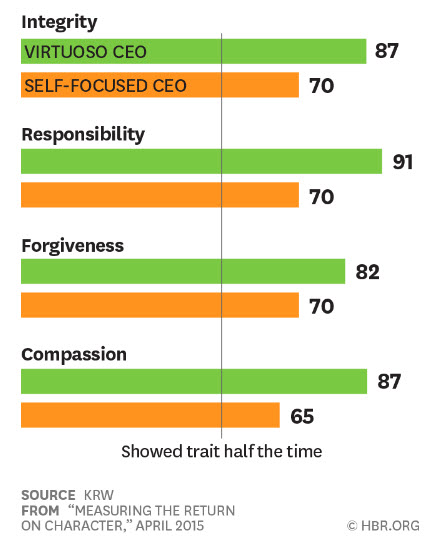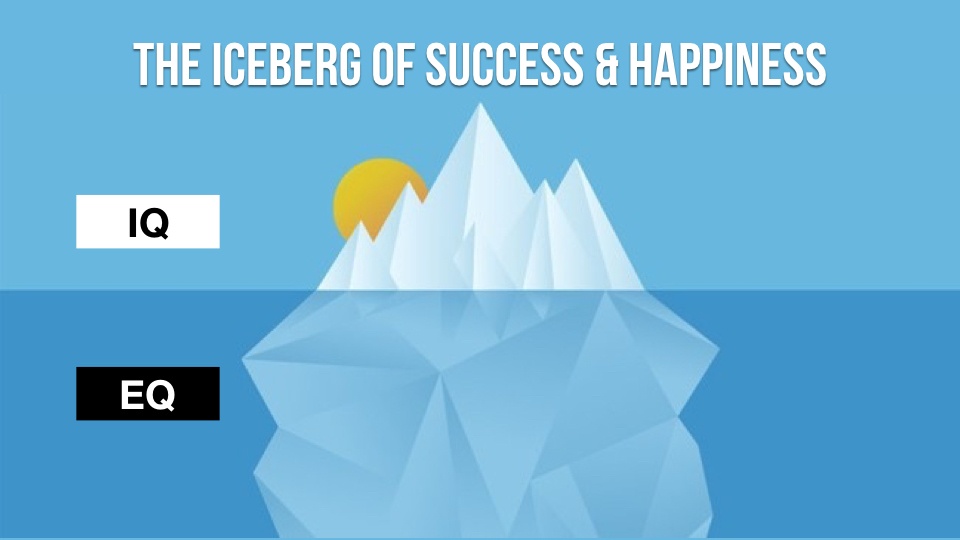The Magic Of Leading With Emotional Intelligence
In the wake of workplace culture scandals like that of Uber and Amazon, corporate America is starving for a safe and transparent workplace. One where open and authentic discussions with leadership are the norm.
I’ve seen it time and time again — when people don’t feel like their leaders are being sincere and responsible, and when people feel that they can’t be open and honest with their leadership, organizations suffer.
And vice versa — when the leader/employee relationship is strong, organizations flourish.
In fact, the November 2017 Employee Pulse study from Qualtrics found that employees with a high confidence level in their company’s senior leadership are 5 times as likely to remain with their employer more than 2 years compared to employees with no confidence.
So what’s the difference between a leader who inspires confidence and one who makes employees want to walk out the door?
The difference is emotional intelligence.
Emotional intelligence (or EI) is the awareness of, control over, and ability to express your own emotions, and understand and manage the emotions of those around you.
Leaders with high degrees of EI know what their emotions are, what they mean, and how they impact their team members.
It’s easy to see why leaders with low EI can jeopardize not just their own leadership position, but their entire organization. Leaders who react emotionally, without understanding or filtering those emotions, can create negative workplaces where frustration and confusion reign.
Leaders with high EI, who understand how their verbal and non-verbal communication affects their team, create stronger workplace relationships. These leaders foster understanding, better communication and a shared sense of purpose.
While you’re learning the ropes in school, IQ helps you master technical skills — but once you’re in the workplace, EI determines your success. Emotional intelligence is what separates the leaders who improve their organizations from the leaders who don’t (or worse, damage their organizations).
Listen to EI expert Daniel Goleman break it down:
In his book, Emotional Intelligence: Why It Can Matter More Than IQ, Goleman describes five elements of emotional intelligence.
- Self-awareness: They understand their own strengths and weaknesses, and how their actions affect others. They can learn from constructive criticism.
- Self-regulation: They can responsibly reveal their emotions and exercise restraint when needed. They don’t shove her feelings down but instead expresses them with restraint and control.
- Motivation: They’re not motivated simply by money or a title, but rather they’re self-motivated. They are resilient and positive in the face of disappointment.
- Empathy: They have compassion and an understanding of human nature that enables them to connect with other people on an emotional level. This allows them to respond genuinely to others’ concerns, and truly be of service.
- People skills: They can quickly build rapport and trust and earn the respect of those around them. They enjoy people and avoid power struggles and backstabbing.
Many leaders have some of these traits — but the best leaders have a handle on all of them.
In his talk at the 2010 Global Health Leadership Institute Conference, Yale Provost Peter Salovey cites Bill Clinton as an example of a leader who lacked one of these traits — self-regulation — with disastrous results.
EI doesn’t just create a better working environment. A leader’s degree of EI has a dramatic impact on an organization’s bottom line, too.
KRW International conducted a survey of 84 U.S. companies and nonprofits, asking how consistently their CEOs and management teams embodied four traits typically found in high-EI leaders: integrity, responsibility, forgiveness, and compassion.
The results were astounding.
Leaders who earned high marks in all four areas (dubbed “virtuoso CEOs” by KRW cofounder Fred Kiel) saw an average return on assets nearly five times higher than those with low ratings.

SOURCE: KRW via HBR
We often talk about how illness spreads quickly in a workplace — but we forget that emotions are just as contagious as the flu.
A single person can affect the emotions of an entire group. We see this in action with negative emotions all the time. Think about the last time you were in a meeting and someone responded angrily or defensively. How did the atmosphere of that meeting change? It shifted to the negative, right? Maybe everyone began feeling agitated, on-edge, anxious or timid.
The workplace is a dynamic and often stressful place, and it’s easy to forget that emotions are infectious.
Just as negative emotions affect the work environment negatively, positive emotions can affect it positively. And an emotionally intelligent leader can work this in his favor, for the benefit of his entire organization.
In The Emotionally Intelligent Workplace (you can download a PDF copy here) authors Cary Cherniss and Daniel Goleman cite the story of James Dozier as an example of this:
In 1981, Dozier was kidnapped by an Italian terrorist group known as the Red Brigades. In the first few days of his captivity, he noticed that his kidnappers were agitated and overly excited, often brandishing their guns. Dozier knew his life was in danger. Luckily, he remembered something he learned from an executive development program: By modeling the desired emotion, a single person can influence the emotions of an entire group.
With effort, Dozier calmed himself and got his own emotions under control. Then he concentrated on expressing that calmness in his actions. Soon he noticed his captors began to calm down themselves, and act more rationally.
When he was rescued two months later, he was sure that his ability to manage his own emotional reactions saved his life during his time in captivity.
Emotional intelligence isn’t always something you’re born with. For many leaders, it’s something they’ve learned, cultivated and honed over time.
Kiel, whom I mentioned earlier in this article, struggled with this himself during the first half of his career: “While I never engaged in any illegal behavior, I’m sure many of my colleagues in those days felt that I was more than willing to throw them under the bus if it meant success for me.” But with effort, he improved his EI and went on to inspire other business leaders to do the same.
Here are 10 techniques you can use to improve your EI and grow as a leader:
- Ask for objective feedback from the people you work with and seek guidance from trusted mentors.
- Keep a journal to improve your self-awareness.
- Take a breath and slow down when you experience strong emotions, so you have a few moments to examine what you’re feeling.
- Write down your values and post them where you will see them often. This will keep what’s important to you front and center.
- Adopt an optimistic mindset. This will likely require focused effort at first but will become more natural over time.
- Put yourself in the shoes of your employees and colleagues.
- Pay attention to your own body language, and what it may be communicating to the person you’re talking to.
- Acknowledge and address your team members’ feelings. For example, “Mary, thank you for putting together that report, even though we ended up not using it for the project. I know you must have felt frustrated to have put in all that work for nothing. Here’s how I’m going to prevent this from happening again … ”
- Take a conflict resolution class.
- Praise your team members often and openly.
When you improve your emotional intelligence, everyone in your organization benefits. Your team members will feel more confident, communication will improve across the board, and your team will accomplish revolutionary things — naturally.
Even if you feel like your EI is on-point, don’t rest on your laurels. In my many years of experience partnering with business leaders to guide strategic initiatives, I’ve found that the greatest leaders make improving their EI a lifetime practice. Follow the tips in this article and your entire organization will reap the rewards.
EI is a key element in bringing about any positive change in your organization — and it’s ingrained the SparkPath methodology. Learn more about how we manage and support program delivery to help business executives advance their organizational and enterprise initiatives.
Download or View this Article as a PDF








